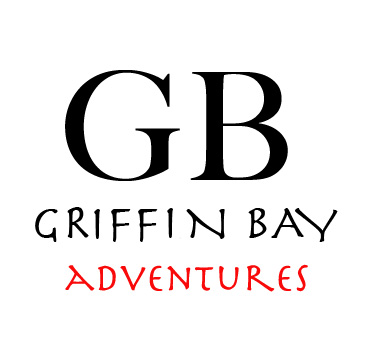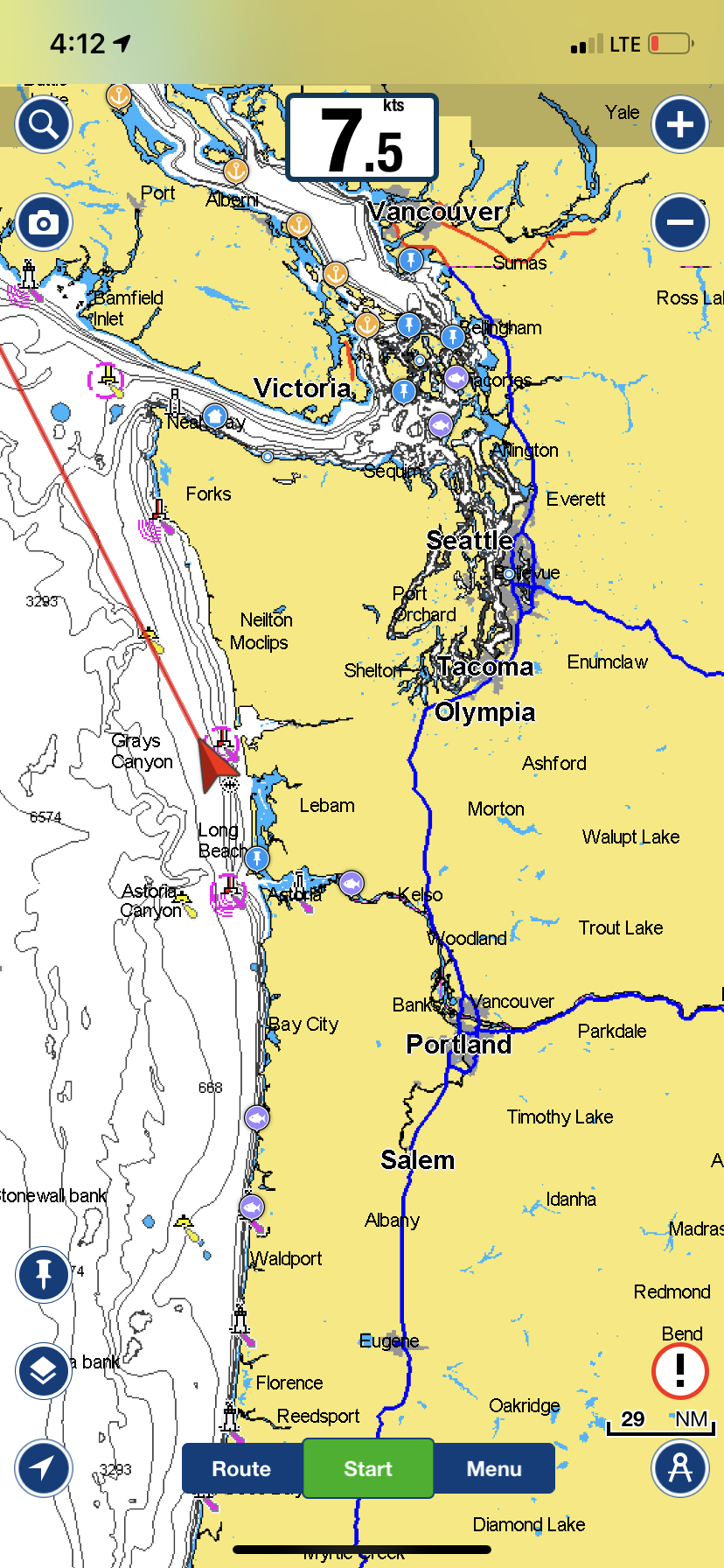Winter deliveries can be a wonderful challenge and on the right boat and with the right crew the variable wind directions and weather windows can make for wonderful passages. I saw an Easterly in the forecast and scrambled to get a crew capable of moving this solid sailing craft from Portland to Orcas Island. As it turned out two former Advance Coastal Cruising alumni of GBA classes from years ago would be able to join as well as a new sailing friend from a neighboring island. A crew of four is a fine number for a delivery like this and even in a worst-case scenario (failing autopilot. rough weather etc). The only concern was that these hearty sailors who signed up for a suffer fest were in for a beam reach in a fully enclosed heated cockpit on a boat with as much luxury as you can fit into a 37 foot sailboat.
Things always come up though. The first thing to challenge the mission was that the LPG tank was expired and the filling station wouldn’t fill it. The tank was a rare and an odd size so buying a replacement would be impossible. We headed to West Marine to see if we could buy an adapter hose that would allow us to buy a cheap refillable steel tank that we could mount outside the tiny propane locker but no luck. The next idea and best idea was to buy a few green BBQ-style cans of LPG and an adapter that would allow us to run the stove off them. West Marine didn’t have them but “Sextants” a small chandlery and the last remaining place to buy used boat gear in PDX did have the adapter and was open for 30 more minutes. Crisis averted.
River navigation should be taken seriously
The day after the crew are aboard, my liferaft was lashed to the deck, provisions were stowed, and we were on our way down the Mighty Columbia toward the Graveyard of the Pacific. A quote from Commander Wilkes, US Navy (ca. 1860) describes this bar on a bad day: “Mere description can give but little idea of the terrors of the bar of the Columbia; all who have seen it have spoken of the wilderness of the ocean and the incessant roar of the waters, representing it as one of the most fearsome sites that can possibly meet the eye of a sailor.”
“The Columbia River Bar has swallowed more ships, about 2,100 at last count, than any other location on the Pacific north of Mexico.”
Sounds awesome right? Well it’s not that bad if you cross it at the right time.
The other thing I noticed before leaving was that the threads holding the headsail’s UV cover on the sail were barely holding together. When I notified the owner he said he had taken the sails into the North Sails Loft in Portland to have them inspected and had been told they would be fine.
Once underway at 7 am we found the tachometer to work intermittently and when we turned on the radar it crashed the plotter. We arrived in Astoria at 18:30 and found that the plotter boots up to full brightness at the worst time destroying your night vision which is already badly effected by the 360 plastic enclosed.
The next day we fueled up and found the fuel gauge to not be accurate and the fuel levels to be off from what the owner had told us. At 845 we were out to sea and it was gusting 25 on the bar. By 11:00 the UV cover was coming off the staysail. We turned on the engine when the charge was low on the house bank but had to slow the boat down first because the big nonfolding prop stuck the transmission in reverse. We made Cape Flattery by 7 am with wind waves of 3 feet against a flood. Around noon the head stopped working and I decided to continue into the wind and current and head for PA to pump out and troubleshoot. Found that the wire nuts on the pump were loose and the cabin lights flickered when bumped. Hot wired the pump to test and the pump worked but there was no pressure. Found that contrary to the owner briefing the head was not discharging overboard. Assumed that the duck valves are prolapsed. With no tools aboard capable of doing this job. Sunday morning I rent Max a car in PA and he heads back to Portland.
Before we met I asked the crew to come up with one meal each cook for dinner one of the four days we would be out. This is a good way to do it because if you only have to cook once in four days you can go all out. This paired with the fact that the cook never does the dishes on my passages makes for quite a smooth cruise all things considered. The seas are seldom smooth though so everyone quickly learns that simple is best. You don’t want to lose your lunch making dinner. Past opportunities to pre slice veggies come easily to mind when one is chasing the onion slice as it is caught by the roll of a wave. I’ve often thought that a Mandoline (a hand-powered slicing kitchen tool) would be a great way to allow someone in the cockpit to slice a bunch of veggies into a bowl while keeping an eye on the horizon. The first lunch was Seattle dogs but in tortillas that I cooked under John’s supervision as it is a specialty of his. (Sausage, onions, sauerkraut and creamcheese. The next dinner was underway off the Washington coast and conducted by Max H who had done some preprep and the meal after this was a Chicken soup made almost from scratch by Barry who regretted somewhat not pre slicing some of the veggies as it was pretty bumpy at that time.
I would say that the best meal of all came from our retired fire captain John Palmer. When we were provisioning together we saw some Thai curry simmer sauce and ingredients that would make a rough weather meal easily. Frozen peas and carrots, minute rice, a yellow onion, and precooked grilled chicken in a bag. This meal came together in 15 minutes for a lunch in the San Juans on the final stretch to Deer Harbor and was amazing. This is a great idea for a seagoing meal. It’s very easy to make things more complicated than necessary and find yourself spending too long in the galley and getting sick. Once sick it is very hard to get well again and so not worth it. Anything that is canned or precooked or in a bag that can be added to something cooked from scratch easily is invaluable offshore. Our plan for the meals was to have hearty cold-weather food that would warm everyone up from the inside and provide the fuel to stay warm on a cold night watch.
Other than the boat’s lack of lee cloths and real sea births we fared very well. Being that we were on a perfect beam reach for the whole Washington Coast and got to sail quite a bit it made up for it.
Test thread life on UV covers using your thumbnail.
Didn’t make it. These are much harder to restitch once they have come off.
Max Heckscher GBA alumni turned indispensable shipmate offshore.
Once across the bar and into the beautiful stiff Easterly we were on a beam reach heading north quite happy in the boat’s full cockpit enclosure.
So glad to have Max Heckscher, John Palmer, and Barry Crist aboard. Great work gents.
A three blade prop at this speed can not be taken out of gear in reverse
on the button










